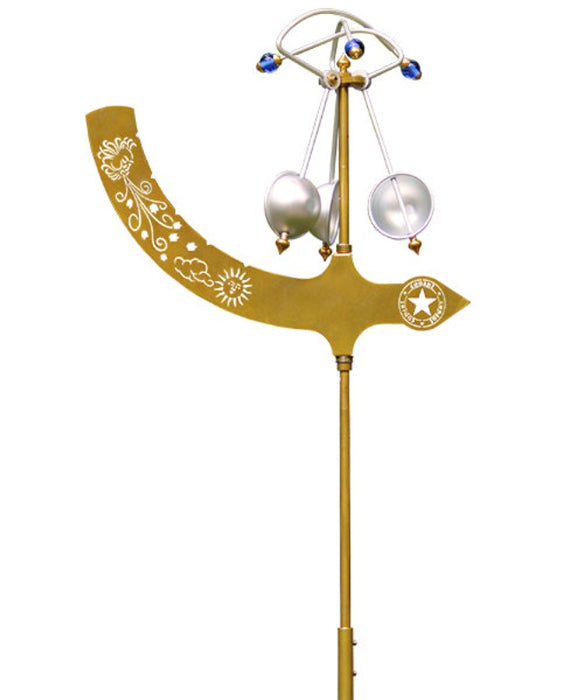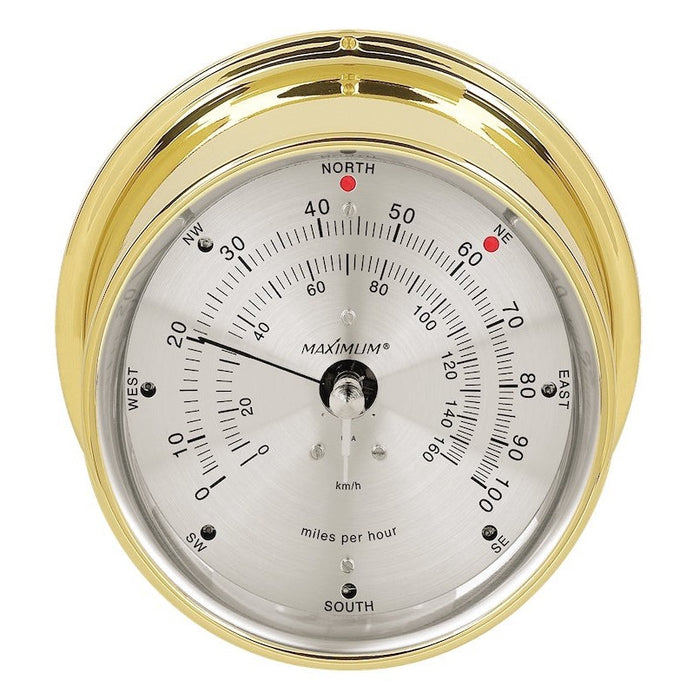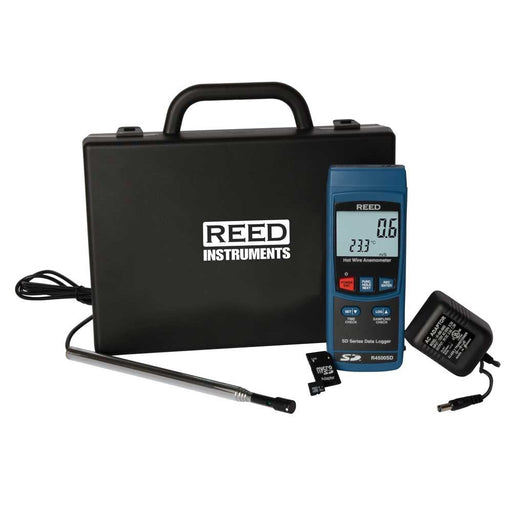(866)223-5699
(866)223-5699

From the ancient mariner's keen senses to state-of-the-art meteorological technology, the quest to quantify the unseen force of the wind has been a vital aspect of human endeavor. Today, anemometers and other sophisticated instruments are at the forefront of this pursuit, offering precise measurements of wind speed and direction that are crucial for a myriad of applications. In this article, we delve into the fascinating world of these devices, exploring their designs, functionalities, and the groundbreaking advances that enhance our understanding and interaction with the very breath of our planet.
Measuring wind speed accurately is crucial for various applications, from weather forecasting to optimizing wind turbine performance. To achieve this, an anemometer is commonly deployed. The cup anemometer, in particular, is a type of wind anemometer that's highly valued for its simplicity and reliability. It consists of three cups mounted on horizontal arms, which are then fixed to a vertical shaft. As the wind blows, these cups catch the air, causing them to rotate. The rotation speed is proportional to the wind speed, allowing the device to meter wind effectively. Such anemometers have been used extensively due to their ability to provide quick and accurate wind speed data. Although the term 'anemometer' might suggest a complex mechanism, these devices operate on straightforward principles, translating rotational movement into readable wind speed data. Understanding how an anemometer functions is essential for professionals in meteorology and other industries reliant on accurate wind speed measurements. It's the dynamic precision of the anemometer that enables it to remain a critical tool in the field, continuously evolving with technological advancements to enhance its efficacy in capturing wind speed and direction.
| Weather Instrument | Function | Location | Price Range |
|---|---|---|---|
| Thermometer | Measures air temperature | Outdoor and indoor environments | $10 - $100 |
| Barometer | Measures atmospheric pressure | Weather stations, homes, boats | $20 - $500+ |
| Anemometer | Measures wind speed | Weather stations, ships, open fields | $30 - $2000 |
| Hygrometer | Measures humidity | Indoor environments, greenhouses, weather stations | $10 - $300 |
| Rain Gauge | Measures precipitation | Outdoor environments, farms, weather stations | $5 - $150 |
| Wind Vane | Shows wind direction | Weather stations, rooftops, open areas | $15 - $500 |
| Weather Radar | Detects precipitation, calculates its motion | Weather stations, airports | $10,000 - $1,000,000+ |
Anemometers, the specialized instruments for measuring wind speed and direction, are found in various applications across multiple fields. If you're curious about where you might encounter an anemometer, look no further than your local weather station. Here, an array of anemometers are often in use, catering to the necessity of accurate wind assessments. In 2024, one might expect to see even more advanced variations of this device. Meteorologists rely heavily on these meters, utilizing both portable and stationary models to predict weather patterns with greater precision. Moreover, anemometers are indispensable in the aviation industry, aiding pilots in making informed decisions about takeoffs and landings in windy conditions. You'll also find an anemometer mounted atop wind turbines, helping to maximize energy efficiency by gauging optimal wind speeds. And for the mariners at sea, an anemometer is a vital instrument, integral in navigating through rough, wind-driven waters. So, whether on land, in the air, or at sea, anemometers are the unsung heroes in the background, keeping us informed and safe from the whims of the wind.

CONANT COLLECTIONS JEFFERSONIAN KINETIC WIND VANE
In the quest to capture precise wind direction information, selecting an optimal wind vane is critical. This task should be approached with a focus on accuracy, as even slight deviations in wind direction can lead to large errors in understanding wind patterns. A premium wind vane not only points to the current direction of the wind but does so with consistency and reliability. When integrated with a robust anemometer system, which measures wind speed efficiently, the ensemble delivers a comprehensive picture of the dynamic wind conditions. Accuracy is paramount; hence, one must ensure the wind vane is well-calibrated and responsive to the subtlest breeze. Whether you're a weather enthusiast or a professional, having a wind vane that can accurately track wind direction is indispensable. Wind is unpredictable, but with the right instruments, we can grasp its course and strength. The wind vane's pivotal role in wind direction measurement makes it an essential tool for those who require precise wind direction data.

MAXIMUM MAESTRO WIND SPEED METER
Adding a wind anemometer to your personal weather station brings the professional touch of accuracy and precision to your wind measurements. Whether you are a hobbyist meteorologist or require detailed climate data for sports or research, a reliable wind speed meter is indispensable. The cup anemometer, renowned for its simplicity and efficiency, is one of the most popular types of anemometer thanks to its ability to gauge wind speed with minimal maintenance. Each rotation of its cups is meticulously calibrated to correspond with a specific meter wind rate, ensuring you can trust the readings you get. When it comes to wind speed, consistency in measurement is key, and modern anemometers are precision-engineered to provide just that. In harsh conditions or gentle breezes, an anemometer's accuracy isn't just about the speed; it also includes direction, which is vital information for weather forecasting. With the right instrument integrated into your weather station, not only can you measure speed with confidence, but using a wind vane, you can track the wind direction accurately. The fusion of these instruments guarantees that your weather observations are both comprehensive and reliable.

The art of foreseeing the weather hinges significantly on understanding the nuances of wind direction. Wind is a key player in the orchestration of weather patterns and by monitoring its direction, meteorologists can predict with greater accuracy the possibility of inclement weather conditions or fair skies. Utilizing a wind vane, an age-old yet indispensable instrument, experts gauge the wind's course, which is crucial in discerning weather changes. Predictions aren't solely based on the direction of the wind; devices such as anemometers play a pivotal role in measuring wind speed. These instruments together, by providing valuable insight into wind's behavior, facilitate the creation of forecasting models that are more reliable. The correlation between wind direction and weather prediction is strong because wind carries moisture, heat, and pollutants, thereby influencing local climates. In essence, capturing the wind's trajectory with precision is instrumental for weather prediction, and equipping a weather station with robust devices that track every gust's speed and every breeze's bearing is essential for accurate meteorological readings.

Seeking to deeply understand wind patterns requires an anemometer that boasts not only accuracy but also a suite of advanced features designed for comprehensive wind analysis. Such an advanced anemometer, crucial for precise wind speed measurements, typically comes equipped with three cup-like structures rotating in response to airflow. Every cup on an anemometer is meticulously shaped to capture wind speed and direction with exceptional precision. As a user, you'll appreciate that anemometers are more than just devices; they are vital instruments inherent to modern meteorological studies. The integration of cutting-edge technology in these anemometers ensures that readings of wind speed do not sacrifice reliability for sophistication. Wind direction is no less critical in weather prediction, and the top-tier anemometers capture this with equal finesse. Whether used alone or as part of larger instruments for surpassing meteorological insights, the right anemometer can enhance any user's ability to track and analyze the often capricious behavior of wind. As technology marches forward, expect to see anemometer features continually refined to aid in delivering the speed and wind direction data crucial for a myriad of applications.
In conclusion, anemometers and instruments designed for measuring wind speed and direction are indispensable tools in meteorology, aviation, marine navigation, and various industrial applications. As technology advances, these devices become more precise, multifunctional, and user-friendly, offering real-time data critical for decision-making. Whether it is for weather forecasting, conducting research, or ensuring safety, the proper assessment of wind parameters can significantly impact outcomes. Therefore, investing in quality wind measurement instruments and understanding their use is paramount for professionals in fields affected by meteorological conditions.
Leave a comment